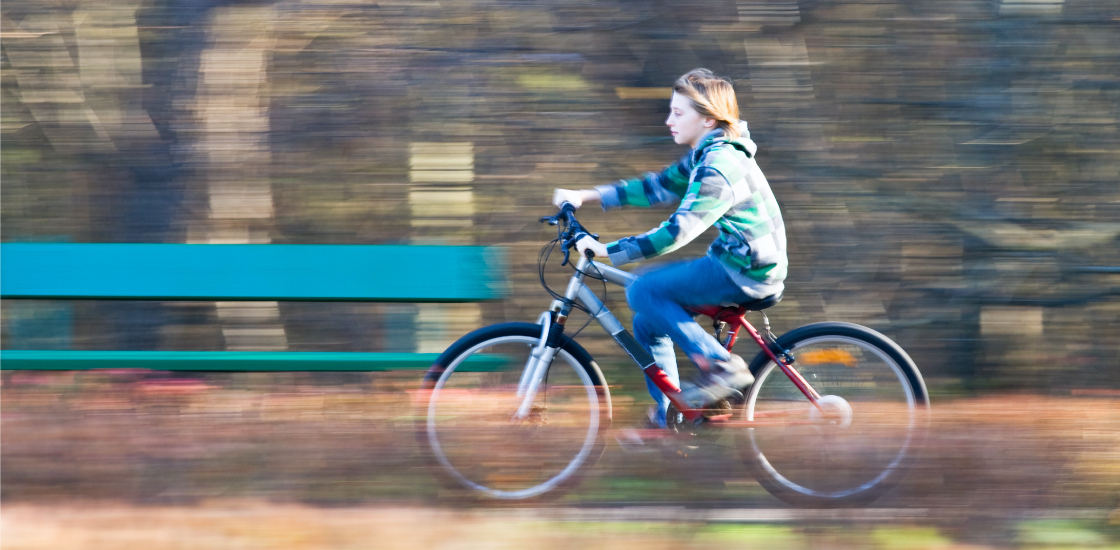THIS ARTICLE IS MORE THAN FIVE YEARS OLD
This article is more than five years old. Autism research — and science in general — is constantly evolving, so older articles may contain information or theories that have been reevaluated since their original publication date.
When Susan Morris watched her son who has autism learn to ride a bike, she noticed something peculiar: He was fine when pedaling slowly, but when he started to speed up, the view of his surroundings rushing past him seemed to overwhelm and disorient him. He struggled to coordinate his movements with the changing visual environment.
Morris, a neuroscientist at Curtin University in Perth, Australia, wondered if her son’s visual experiences on a bike played into the known motor difficulties among individuals with autism. In a new study, she and her colleagues found an unusual disconnect between vision and control of posture — a skill that supports walking and other motor abilities — in people with autism.
They discovered that adults with autism may fail to properly incorporate visual input when coordinating their movements. This deficit may contribute to both motor and social impairments, the scientists reported 24 August in Neuroscience1.
“I was surprised the results were so clear,” Morris says.
Studying 12 adults with autism and 20 controls, Morris and her colleagues strapped a vibrating device to the nape of each participant’s neck. When the device is on, the buzz activates receptors in the muscles that sense movement, creating the impression that the head is tilting backward. If the eyes of the person who feels the vibration are closed, the person typically leans forward to compensate.
Tracking tilt:
In the study, the participants stood on a plate that tracked shifts in their center of gravity. They also wore glasses with liquid crystal lenses that can transform instantly from transparent to opaque, obscuring their vision.
With their vision blocked, the participants with autism and the controls both responded to the vibration by leaning forward. But when the lenses were transparent, only the adults with autism tilted forward.
The findings suggest that most people can use vision to override a false sense that the head is tipping backward. They can see that the environment isn’t actually shifting after all. By contrast, adults with autism rely on what they feel, not on what they see.
“It’s clear evidence to suggest that individuals with autism do indeed appear to tend to discount visual information during processes involving motor control and learning,” says Stewart Mostofsky, director of the Laboratory for Neurocognitive and Imaging Research at the Kennedy Krieger Institute in Baltimore, who was not involved in the study.
The findings mesh with work by Mostofsky showing that individuals with autism rely too heavily on proprioception — awareness of the body’s position in space — when learning a motor task2.
Improper integration of visual and motor information can lead to more than just motor impairments, Morris says. Social skills, such as imitating others and following the movement of other people’s faces, also depend on motor skills informed by visual input.
Morris plans to explore how people with autism respond to visual information when navigating situations outside the lab — for instance, when driving a car or crossing a street.

By joining the discussion, you agree to our privacy policy.